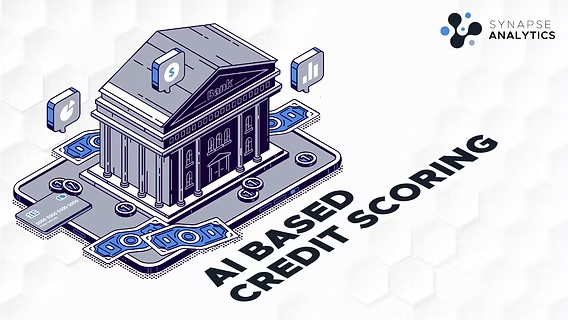Global Expansion Strategies for FinTechs in Emerging Markets: A Playbook for Leaders
2nd August 2025
 QR Codes and the Cashless Leap: Transforming India's Financial DNA
QR Codes and the Cashless Leap: Transforming India's Financial DNA
 The Rise of Contactless Payments: Benefits and Security Concerns
The Rise of Contactless Payments: Benefits and Security Concerns
 Biometric Payments: The Next Big Trend in Secure Transactions
Biometric Payments: The Next Big Trend in Secure Transactions
 The Impact of 5G on Fintech Services
The Impact of 5G on Fintech Services
 How AI is Transforming the Credit Scoring System
How AI is Transforming the Credit Scoring System
 How Open Banking is Shaping Financial Services Globally
How Open Banking is Shaping Financial Services Globally
.jpg) The Future of Payments: Trends Reshaping Transactions in 2025
The Future of Payments: Trends Reshaping Transactions in 2025
 The Role of Cryptocurrencies in Cross-Border Payments
The Role of Cryptocurrencies in Cross-Border Payments
 Flipkart Gets a Lending Licence: A Bold Leap into Embedded Finance
Flipkart Gets a Lending Licence: A Bold Leap into Embedded Finance
 The Evolution of Fintech Regulation: What’s Next?
The Evolution of Fintech Regulation: What’s Next?
 Top Fintech Innovations Shaping 2025: The Future of Finance
Top Fintech Innovations Shaping 2025: The Future of Finance
 What the Future Holds for Digital-Only Banks: Navigating the Next Era of Banking
What the Future Holds for Digital-Only Banks: Navigating the Next Era of Banking


22 March 2025
3 min read
330
Fintech has dramatically reshaped the global financial landscape, offering innovative solutions that improve accessibility, efficiency, and customer experience. However, as the industry grows, regulatory frameworks must continuously evolve to balance innovation with consumer protection, financial stability, and data security. In 2025, the fintech regulatory environment is set to undergo significant transformations, driven by technological advancements, emerging risks, and the need for more comprehensive oversight.
Regulators across the globe are adopting more proactive and dynamic approaches to fintech regulation. In key markets like the U.S., EU, and India, regulatory sandboxes have become instrumental in fostering innovation. These sandboxes allow fintech startups to test products under regulatory supervision, helping authorities better understand new technologies and their potential risks.
Additionally, cross-border collaboration among regulatory bodies is on the rise. Organizations such as the Financial Action Task Force (FATF) and the International Organization of Securities Commissions (IOSCO) are working on harmonized frameworks to ensure consistent regulatory standards for fintech companies operating globally.
With the rise of open banking, digital wallets, and decentralized finance (DeFi), data privacy and security have become paramount. In 2025, more jurisdictions are expected to align their regulations with GDPR-like privacy standards, mandating stronger consumer consent mechanisms and data protection practices.
Moreover, regulations around cybersecurity are becoming more stringent. Financial institutions and fintech companies are required to implement robust security protocols, regular audits, and incident response plans to safeguard sensitive customer data.
Cryptocurrencies and digital assets continue to challenge traditional regulatory models. In 2025, many countries are introducing clearer guidelines for digital asset service providers, including licensing requirements, anti-money laundering (AML) measures, and investor protection mechanisms.
Central Bank Digital Currencies (CBDCs) are also becoming a focal point of regulatory discussions. Countries like China, India, and the EU are advancing their CBDC projects, prompting regulators to create legal frameworks to govern their issuance, distribution, and interoperability with existing payment systems.
One of the primary objectives of fintech regulation is to protect consumers, particularly those in underserved communities. Regulators are emphasizing the need for transparent pricing, responsible lending practices, and simplified dispute resolution mechanisms.
In emerging markets, regulatory bodies are working closely with fintech companies to promote financial inclusion. This includes incentivizing digital payment adoption, ensuring fair access to credit, and providing financial literacy programs.
Regulatory Technology (RegTech) is playing a crucial role in helping both regulators and fintech companies comply with evolving regulations. Automated compliance tools, AI-driven fraud detection systems, and blockchain-based audit trails are becoming standard practices in the industry.
In 2025, RegTech adoption is expected to increase, enabling real-time regulatory reporting, improving risk management, and reducing compliance costs.
The evolution of fintech regulation in 2025 reflects the dynamic nature of the industry and the growing need for comprehensive oversight. As regulators strive to strike a balance between fostering innovation and safeguarding consumers, collaboration between fintech companies, regulatory bodies, and technology providers will be essential. By embracing forward-looking regulatory frameworks, the fintech ecosystem can continue to drive financial inclusion, transparency, and sustainable growth in the years ahead.
Read Next
 News
News
 News
News
 Article
Article
 Blog
Blog
 News
News
Live Polls
Live Discussion
Topic Suggestion
Whom Do You Wish To Hear
Sector Updates
Leave your opinion / comment here